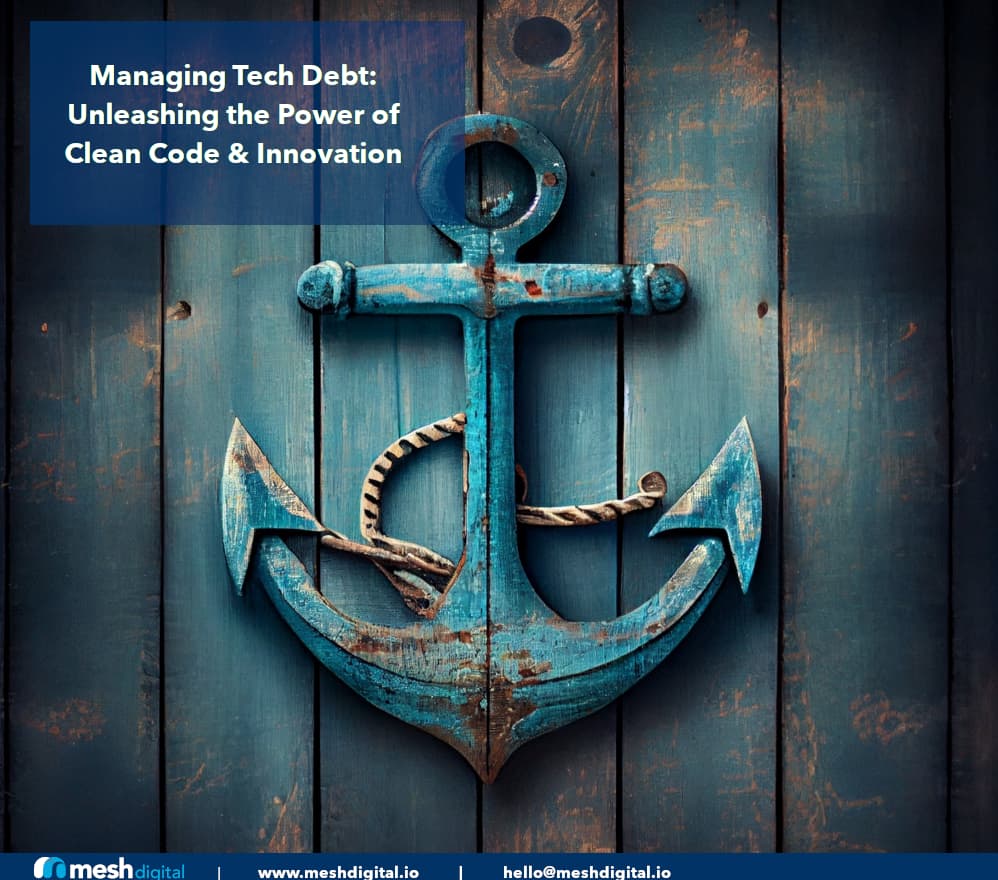Managing Technical Debt for Chief Product Officers (and Chief Digital Officers): Unleashing the Power of Clean Code & Innovation
In the realm of product development, tech debt lurks as a formidable challenge for Chief Product Officers and their teams. In this insightful article, we explore the importance of addressing technical debt and how CPOs can foster a culture of clean code and innovation within their organizations.

Introduction
In the realm of product development, technical debt lurks as a formidable challenge for Chief Product Officers (CPOs) and their teams. Technical debt, stemming from the accumulation of shortcuts and suboptimal coding practices, can hinder innovation and product success. As stewards of product strategy and execution, CPOs must understand the implications of technical debt and devise strategies to manage and mitigate its impact. In this insightful article, we explore the importance of addressing technical debt and how CPOs can foster a culture of clean code and innovation within their organizations.
The Impact of Technical Debt on Product Development
Technical debt can significantly impact product development, leading to several challenges for CPOs:
a. Reduced Agility: Accumulated technical debt can slow down development cycles, impeding the ability to respond quickly to market demands and changing customer needs.
b. Increased Maintenance Costs: As technical debt accumulates, the cost of maintaining and updating the product rises, diverting resources away from innovation.
c. Quality and Performance Issues: Unaddressed technical debt can introduce quality and performance issues, affecting customer satisfaction and the product's reputation.
d. Inhibited Innovation: Teams burdened with technical debt often struggle to allocate time and resources for new features and innovative enhancements.
Prioritizing Technical Debt Management
CPOs must prioritize technical debt management as an integral part of their product strategy:
a. Conduct Technical Debt Assessments: Initiate regular technical debt assessments to identify areas requiring attention. Collaborate with development teams to gain insights into the extent of debt and its impact on the product roadmap.
b. Align Technical Debt with Business Goals: Prioritize technical debt payback based on its alignment with strategic business goals. Focus on areas that have a direct impact on customer experience and product performance.
c. Strike a Balance between Innovation and Debt Payback: While managing technical debt is crucial, ensure that it doesn't hinder innovation. Strike a balance between addressing debt and investing in new features to keep the product competitive. Being careful to not forget to pay down that technical debt, sometimes aggressively, to facilitate future innovation that would have been bottlenecked by tech debt.
d. Communicate the Value of Debt Management: Educate stakeholders, including business unit heads and the C-Suite about the importance of addressing technical debt and its long-term benefits for the product's stability and future development.
Cultivating a Culture of Clean Code and Innovation
CPOs play a pivotal role in fostering a culture of clean code and innovation within their organizations:
a. Promote Code Reviews and Best Practices: Encourage regular code reviews and the adoption of coding best practices to maintain code quality and consistency.
b. Embrace Test-Driven Development (TDD): Introduce Test-Driven Development practices to ensure that new features are thoroughly tested, reducing the likelihood of introducing technical debt.
c. Invest in Continuous Learning: Facilitate continuous learning opportunities for development teams to stay updated on industry best practices and emerging technologies.
d. Foster Collaboration between Product and Development Teams: Encourage open communication and collaboration between product and development teams. Aligning their goals and priorities will result in better product outcomes and reduced technical debt.
Leveraging Technology and Tools
Technology plays a vital role in managing technical debt efficiently:
a. Automate Code Analysis: Implement code analysis tools to automatically identify and address technical debt hotspots, enabling faster detection and resolution.
b. Utilize Continuous Integration and Continuous Deployment (CI/CD): Adopt CI/CD practices to streamline development processes, ensuring that changes are continuously integrated, tested, and deployed.
c. Embrace Cloud-Based Solutions: Leverage cloud-based infrastructure to reduce technical debt associated with maintaining on-premise hardware and software.
Measuring Progress and Success
CPOs should implement key performance indicators (KPIs) to measure the progress in managing technical debt and its impact on product development:
a. Technical Debt Reduction Rate: Measure the rate at which technical debt is being paid down, assessing progress over time.
b. Product Quality Metrics: Track metrics related to product quality, performance, and customer satisfaction to understand the impact of technical debt on these aspects.
c. Time-to-Market: Monitor the time-to-market for new features and updates to assess whether technical debt is impeding development speed.
Conclusion
As CPOs navigate the complex landscape of product development, managing technical debt emerges as a critical factor influencing the success of their initiatives. By prioritizing technical debt management, striking a balance between innovation and debt payback, and fostering a culture of clean code and innovation, CPOs can drive their organizations toward product excellence. Leveraging technology and automated tools, and implementing KPIs to measure progress, CPOs can ensure that technical debt becomes a manageable challenge, empowering their teams to focus on building innovative and customer-centric products.
References:
- Martin, R. C. (2009). Clean Code: A Handbook of Agile Software Craftsmanship. Prentice Hall.
- Fowler, M., Beck, K., Brant, J., Opdyke, W., Roberts, D., & Johnson, R. E. (1999). Refactoring: Improving the Design of Existing Code. Addison-Wesley Professional.
- Cohn, M. (2004). User Stories Applied: For Agile Software Development. Addison-Wesley Professional.
- Hunt, A., & Thomas, D. (2000). The Pragmatic Programmer: Your Journey to Mastery. Addison-Wesley Professional.
- Freeman, S., Pryce, N., & Freeman, T. (2009). Growing Object-Oriented Software, Guided by Tests. Addison-Wesley Professional.
